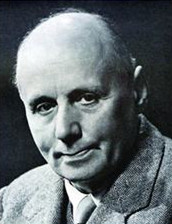Zhi Xing|ULAB: Sparking Curiosity and Love for Science
Issue date:2018-01-24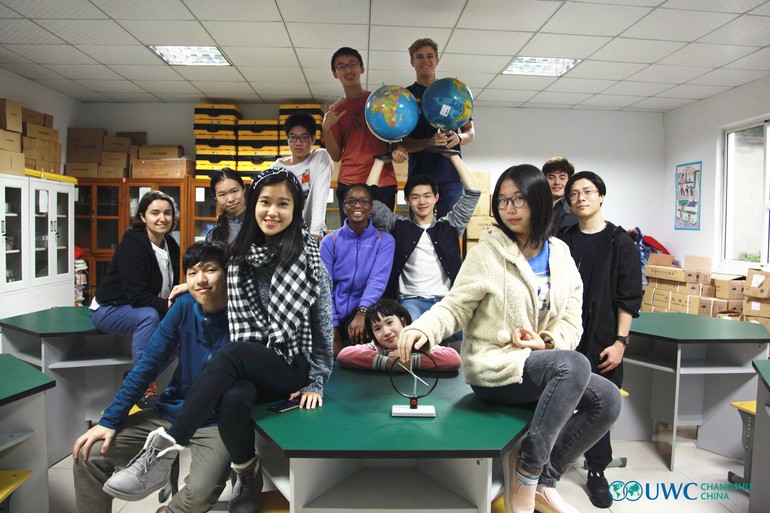
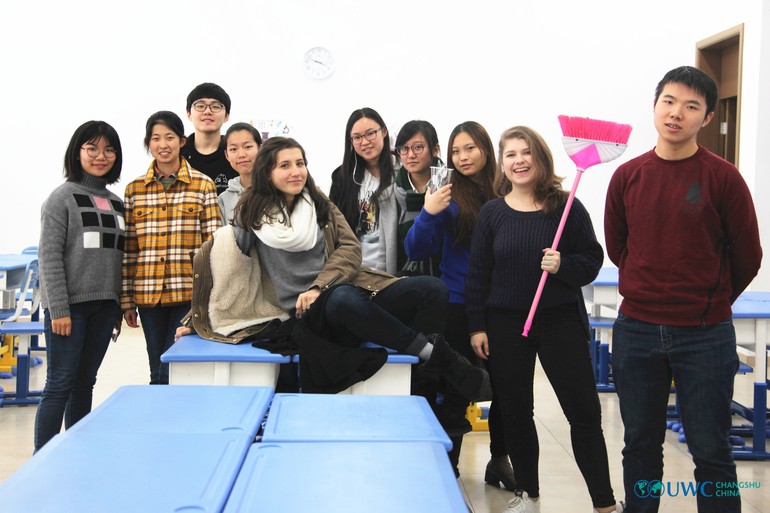
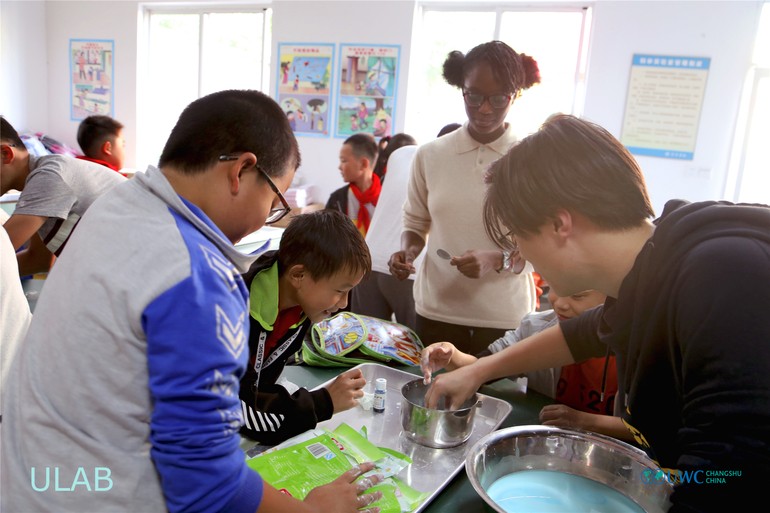
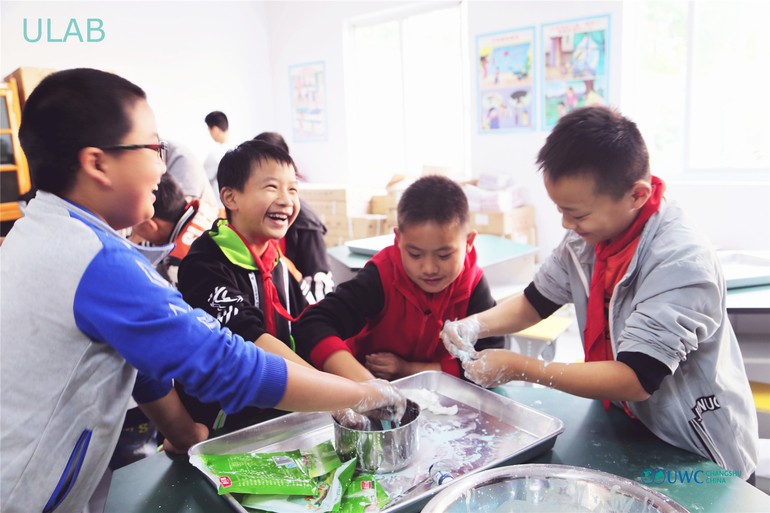

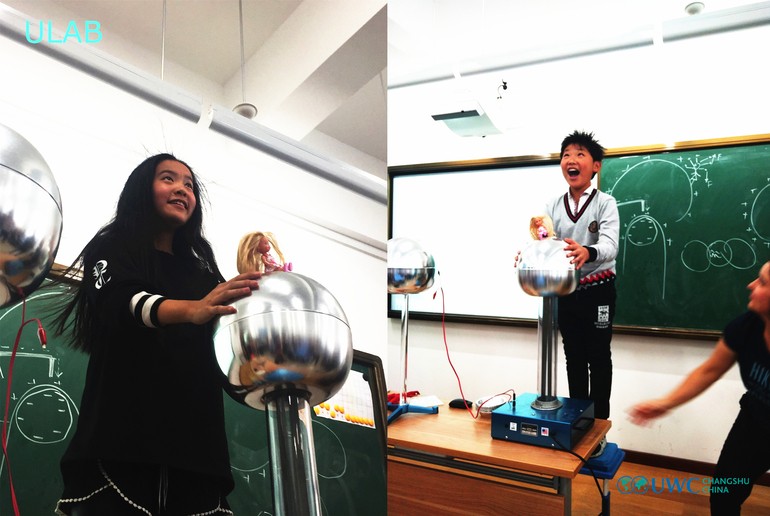
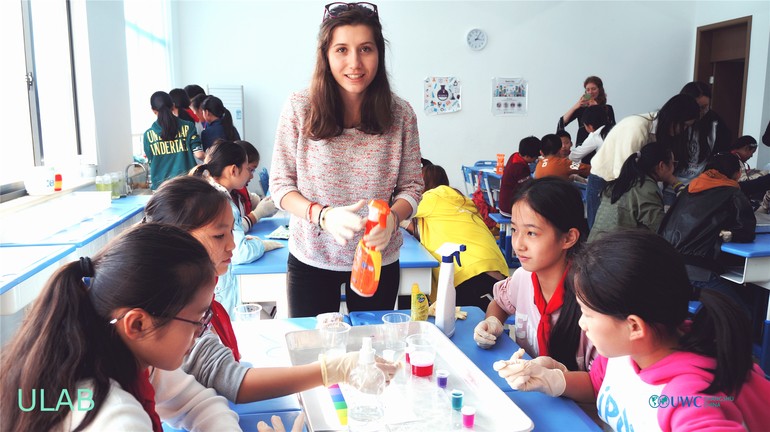
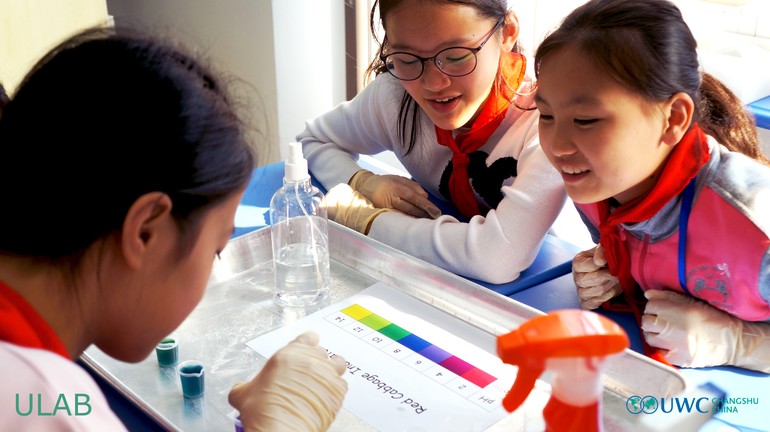
In this issue, members of ULAB Zhi Xing shared how they exposed children in the local primary schools to the wonder of science and inspired them to be catalysts for change in the world.
What is ULAB?
ULAB is a service Zhi Xing founded earlier in 2017 by students of UWC Changshu China. Our goal is to benefit children in primary schools by exposing them to the wonder of science. We believe that spreading interest in science can be a catalyst for change in the world, and acting in the local sphere is the first step. The Zhi Xing is organized into two groups: physics and biochemistry.
Both physics and biochemistry group plan experiment and visit schools to demonstrate and engage the experiments with the children. At this point, we have formed a relationship with two primary schools in Changshu, Dongnan and Yucai, which is a school for children of migrant workers.
What has physics group accomplished thus far?
We began the year by planning our first experiment. We decided that a good way to introduce the three forms of matter is to demonstrate a counter example in non-newtonian fluid. This substance is in between asolid and a liquid. When you touch it slowly, it feels like a liquid, but when you press it hard or try to compress it, the substance feels like a solid. It is made with cornstarch and water. To prepare, we made a powerpoint presentation, bought several bags of cornstarch, created a poster explaining the experiment, and gathered materials such as bowls, forks, and trays. The next Friday, it was time to visit the school, Dongnan. A bus provided by our school brought us there. When we arrived, it was a bit daunting. Our first time exhibiting the experiment we have prepared, our first time at this school with these students,and for many in our group, the first time ever teaching younger kids. Still, we faced the challenge and went for it. During the powerpoint presentation introducing the concept and the demonstration, we could already tell that the kids were teeming with excitement. They answered our questions immediately, eagerly, and loudly. At last, when we brought out the fluid, they were mesmerized. We placed a bowl at each table in the classroom, so that everyone could touch the fluid at the same time and experience a hands-on investigation into the properties of non-newtonian fluid. Although the non-Chinese speakers were not able to contribute by explaining the conceptual details, they got involved by helping prepare the fluid, showing the kids how to touch the fluid, and in other non-verbal ways.
It is fascinating to see how a bond and understanding can be formed between two people, even without speaking. To smile, laugh, and play alongside children was enough to feel a connection.
The following week, our group showed this experiment at the other school, Yucai. One challenge was that the students here were not as enthusiastic during class, and they did not have as much prior knowledge as those of the previous school, which made it a bit more difficult to teach. Still, as we went along, they became more interested, and we taught them the concepts they were missing. The week after that, we began planning our second experiment, which focused on electrostatics. Our group supervisor, Sefika, our physics teacher from Turkey, had a Van de Graaff generator in her lab. This is a machine which uses only a spinning belt to produce high voltage electricity. In addition to the generator, we also brought two other gadgets, one that is simply a metal rod that can rotate on a vertical axis, and one that is very similar but rotates horizontally. Both illustrate electrostatics because as you remove electrons from a rod in hand by rubbing it with a cloth, you can put the rod near the gadget’s rod and an attraction will occur. Essentially, you can move the gadget’s rod without even touching it.
Once again, we had successfully designed an experiment with a focus on kids, one that they would enjoy, be interested in, and have fun with. It is imperative that the demonstration puzzles the children, because this sparks a need for them to understand why such a thing happens. For example, they had never seen a liquid that at times behaves like a solid, and because this was confusing and unfamiliar, they wanted to know more about what it was and why it happened. Before visiting, another powerpoint presentation and poster was prepared. In class, we first showed them with one of our group that if you put your hands on the Van de Graff generator, the static electricity is transferred to your hair, making it stand up. Then, we got the students involved by inviting them to try it themselves. Naturally, this created wild excitement. Each time we leave a school, we put up the poster that we brought with us. It hangs somewhere on the wall, as a reminder of the experience and as information for the curious. It has both Chinese and English, to promote bilingualism.
What has biochemistry group accomplished thus far?
At the beginning of our Zhi Xing, we were still at the stage of what we can call discovery, discovering each other and could not wait for the amazing experiences that await us. Despite separating in two specific departments to increase the efficiency of the team, we developed bonds among the members as we shared our unique experiences and embarked on this meaningful journey together. Throughout the past three months, Biochemistry Department of ULAB had organized two interactive experiments and engaged with the children in the two schools.
The first experiment was making pH indicator out of cabbage juice. We mashed the purple cabbage and extracted the juice, and after this we used different products commonly used in our daily lives such as lemon juice, baking soda, vinegar, and a detergent, to see whether they are acids or bases to test their degrees of acidity and basicity. In the following weeks, we went to schools. Although the children have little background knowledge with the concepts, we were glad to see the children with curiosity and enthusiasm to learn more. When we began the experiment, they were all fascinated by the hands-on way of learning. The children were constantly asking, “why the colors of cabbage juice was changing” and “why there are bubbles on top of the surface of the mixture”. We were as excited as the children to feed their curiosity by answering their questions and pose them questions to intrigue their curiosity.
The children have also increased in their confidence level as they were encouraged to raise hands and answer our questions or pose questions to us. While doing the experiments, even though the children did them independently, ULAB members assist them as needed. We bond with the children like their friends rather than teachers to ensure the children are able to experiment by themselves up to their own creativity.
The second experiment we planned was slime experiment. All we needed for this experiment was glue, borax powder,water, and different food colorings to add vibrancy to the classroom! When we arrived the schools, we started off by giving a cup of glue to the children while the children stared at us with confusion. After we explained the instructions of how they can make slime, they mixed the materials to create slimes. Slowly and surely, the slime began to take form. It was amazing to see the children being proud of their creation and learn from each other on how they can make the best slime. The energy in the classroom filled with excitement and happiness was so overwhelming and delightful for all the ULABers.
At the end of each experiment, Chinese-speaking members of ULAB would explain the scientific concepts behind these experiments. That is when we can see “a-ha” moments from the faces of the children. In moments like these we know that we have sparked. We have sparked not only joy and laughter but also curiosity and passion for sciences. ULABers not only just teach but also connect with passionate young kids to spark their curiosity for tomorrow’s world of science.
ULAB Documentary








